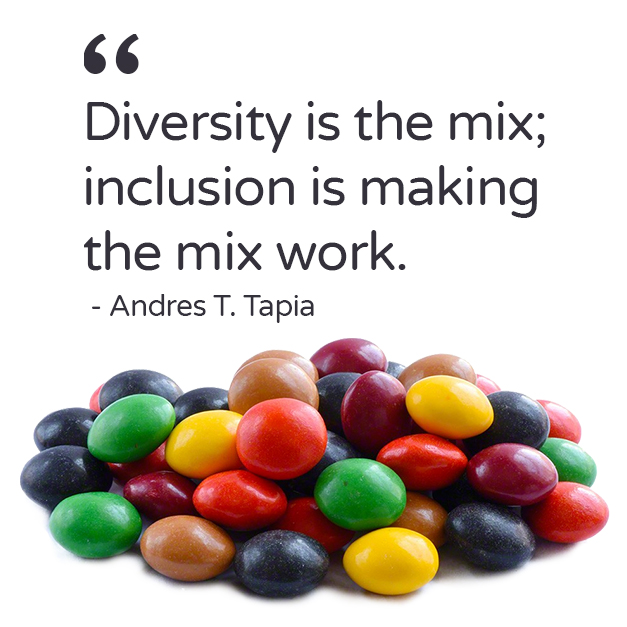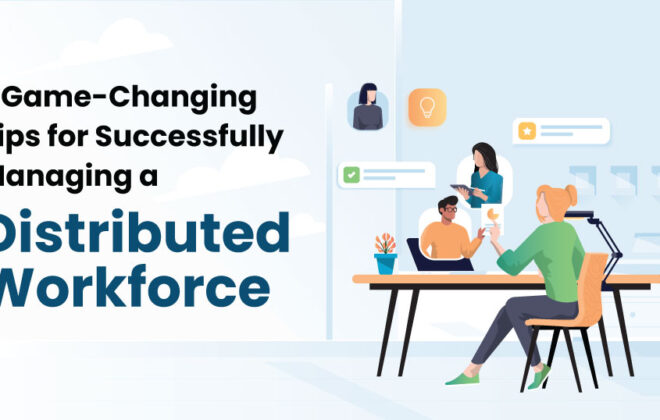Why Is Workforce Diversity In Tech Firms Such A Craze Right Now?

Have you ever learned about a culture (other than yours) from someone you met at your workspace? In today’s business world, people from all walks of life join hands to work towards a common goal. Several organizations pride themselves on employing a diverse workforce, one that consists of individuals with an array of experiences and characteristics. These key characteristics include race, religion, gender, age, ability, and sexual orientation etc. Workforce diversity is an asset to any business that strives for a competitive advantage in the global economy.
Finding it tough to build a diverse workforce?
LET US HELP YOU
Now the question – why workforce diversity matters in tech?
A technology company working on building a diverse workforce can augment its skill base, majorly. This collaboration of varied outlooks could contribute additionally to your firm in the form of innovation, creativity, and positive brand image. Innovation is crucial for any tech company and diversity plays a significant role in this. So why not consider workforce diversity in tech companies?
“Why diversity matters,” a 2015 report McKinsey & Co., finds:
|
Lack of Workforce Diversity – The Problem
While the US is having more women in the leading positions in politics and tech-sector, the same can’t be seen within the technology sector. According to Silicon Valley Bank’s 2017 Startup Outlook report, over 70% (66 percent in 2016) of the 941 startups surveyed have no women in their leadership positions. Even more surprising is that half of all the startups have majorly male executives.
Big Companies are Less Diverse
While this was the story of the budding companies, the situation is even worse at the big tech companies. Despite a promise from technology companies to touch the minority roof, the Bay Area tech companies have a race problem, and it’s getting worse.
- Just 20% of technical jobs in Google are held by women
- Additionally, the Black and Hispanic representation is also declining.
- For big players like Google and Facebook, black representation in technical jobs drops below 2% (drops to 1% in Facebook).
In November 2018, Facebook’s former black manager, Mark S. Luckie stated that the company has “black people problem.” He said that the population of Facebook employees doesn’t reflect its most active users – the blacks! The lack of black representation among Facebook employees has an adverse impact both on users and its black staffers.
So, what is the reason behind Silicon Valley’s mass failure to hire a more diverse workforce?
- Talent Pipeline – According to the Silicon Valley companies, the issue is “the talent pipeline.” Black students with computer science degrees are available in numbers, but according to Leslie Miley, the director of engineering at Slack, the bay area tech companies don’t want students with computer science degrees from just anywhere. The founders and hiring managers of Silicon Valley companies want students with degrees from the same schools they went to.
The preference for an elite resume sorely obstructs the so-called pipeline – and results in a much less diverse group of candidates for Silicon Valley jobs. - Referral Factor – Tech is excessively (approximately 85%) referral-based. So, when the majority of your staff are whites, you can bet their referrals are going to be majority whites.
 How to Improve Diversity in Technology Firms
How to Improve Diversity in Technology Firms
Tech companies may not be aware of the impact of a balanced and inclusive team. Diversity allows businesses to survive in an increasingly globalized, knowledge-work based environment, as McKinsey & Co 2015 report states: diverse teams pays handsomely. The following list includes steps on how to hire a diverse workforce.
- Ensure equal pay – In 2015, Salesforce found that among its 17,000 employees, a large number of women employees were paid less than their male counterparts for the same role. As a solution, it adjusted salaries accordingly so that male and female employees earn equally for similar roles.
- Rework on processes and policies – Strategic programs, such as a diverse-slate approach to hiring, implementing a values-aligned vs. a culture-fit interview, and providing opportunities (training) to people from marginalized groups to develop, take care of portrayal and retention problems.
- Build a rewarding recruitment strategy – Microsoft is giving financial incentives to maintain a gender balance. The company is rewarding its hiring managers to encourage them to focus on diversity in their hiring patterns.
- Promote Inclusion – Encourage underrepresented employees to share their stories; listen and believe them. Also, remind them you value their contribution by asking for the solutions – their expertise is valuable.
Diversity and inclusion are critical to every company’s (and more for tech) ability to innovate. One of the leading providers of contingent and permanent workforce solutions, we understand your challenges of building a diverse workforce. Therefore, we employ advanced analytics to identify and evaluate talent as per the parameters assigned by the clients. This ensures faster and a more diverse set of hires with an increased likelihood of success. With the help of the publicly available professional data, we spot fresh recruiting sources, compare our talent supply chain to competitors and recognize ways to optimize our hiring channels.
Want to hire a more diverse workforce? We can help!
LET’S CONNECT
Liked what you’ve just read? Why not subscribe to our knowledge base for more such interesting reads.
Tags In
Related Posts
Subscribe For Updates
Categories
- Accountant
- AI
- Automation
- Awards and Recognitions
- Blue Collar Staffing
- Burnouts
- Campus Recruiting
- Cloud
- Co-Ops agreements
- Company Culture
- Compliance
- contingent workforce
- Contingent Workforce
- COVID-19
- Cyber Security Staffing
- Data Strategy
- Digital Transformation
- direct sourcing
- Distributed Workforce
- Diversity
- Diversity & Inclusion
- Economy
- Events & Conferences
- fleet industry
- Gig Economy
- Girls in Tech
- Global Talent Research and Staffing
- Government
- Healthcare
- Healthcare Staffing
- Hiring Process
- Hiring Trends
- Home Helathcare
- HR
- HR Practices
- HR Tech
- IT
- Labor Shortages
- Life Science
- Local Governments
- News
- Nursing
- Payroll Staffing
- Public Sectors
- Recruiting
- Remote Work
- Skill Gap
- SMB Hiring
- Snowflake
- Staffing
- Staffing Augmentation
- Staffing Challenges
- Talent ROI
- Tech Staffing
- Technology
- Tips & tricks
- Total Talent Management
- UI/UX Design
- Uncategorized
- Veteran Staffing
- Veterans Hiring
- Veterans Hiring
- Workforce Management
Recent Posts
- Automation in Recruiting: From Chatbots to Predictive Screening
- Gig Economy Expansion: The Impact on Talent Pools and Business Models
- Skills-Based Hiring: Why Credentials Alone Don’t Cut It in 2025
- Procurement 3.0: AI & Intelligent Automation in 2025
- Q3 Is Here: Is Your Contingent Workforce Strategy Falling Behind?
Newsletter
Archive
- September 2025
- August 2025
- June 2025
- April 2025
- March 2025
- December 2024
- November 2024
- October 2024
- September 2024
- August 2024
- July 2024
- June 2024
- May 2024
- April 2024
- March 2024
- February 2024
- January 2024
- December 2023
- November 2023
- October 2023
- September 2023
- August 2023
- July 2023
- June 2023
- May 2023
- April 2023
- March 2023
- February 2023
- December 2022
- November 2022
- October 2022
- September 2022
- August 2022
- July 2022
- June 2022
- November 2021
- October 2021
- September 2021
- August 2021
- July 2021
- June 2021
- May 2021
- April 2021
- March 2021
- February 2021
- January 2021
- December 2020
- November 2020
- October 2020
- September 2020
- August 2020
- July 2020
- June 2020
- May 2020
- April 2020
- March 2020
- February 2020
- January 2020
- December 2019
- November 2019
- October 2019
- September 2019
- August 2019
- July 2019
- June 2019
- May 2019
- January 2019
- December 2018
- November 2018
- October 2018
- September 2018
- August 2018
- July 2018
- June 2018
- May 2018
- April 2018
- March 2018
- February 2018
- January 2018
- December 2017
- November 2017
- October 2017
- September 2017
- August 2017
- July 2017
- June 2017
- May 2017
- November 2016
- October 2016



